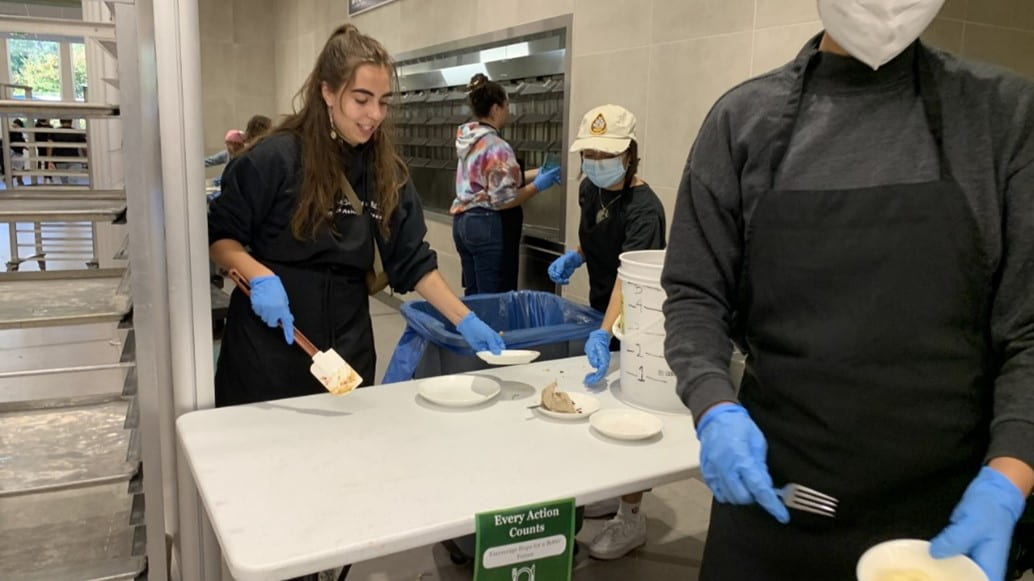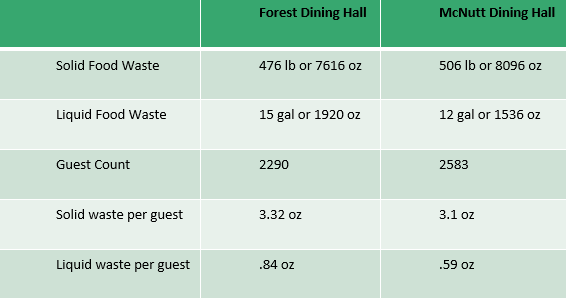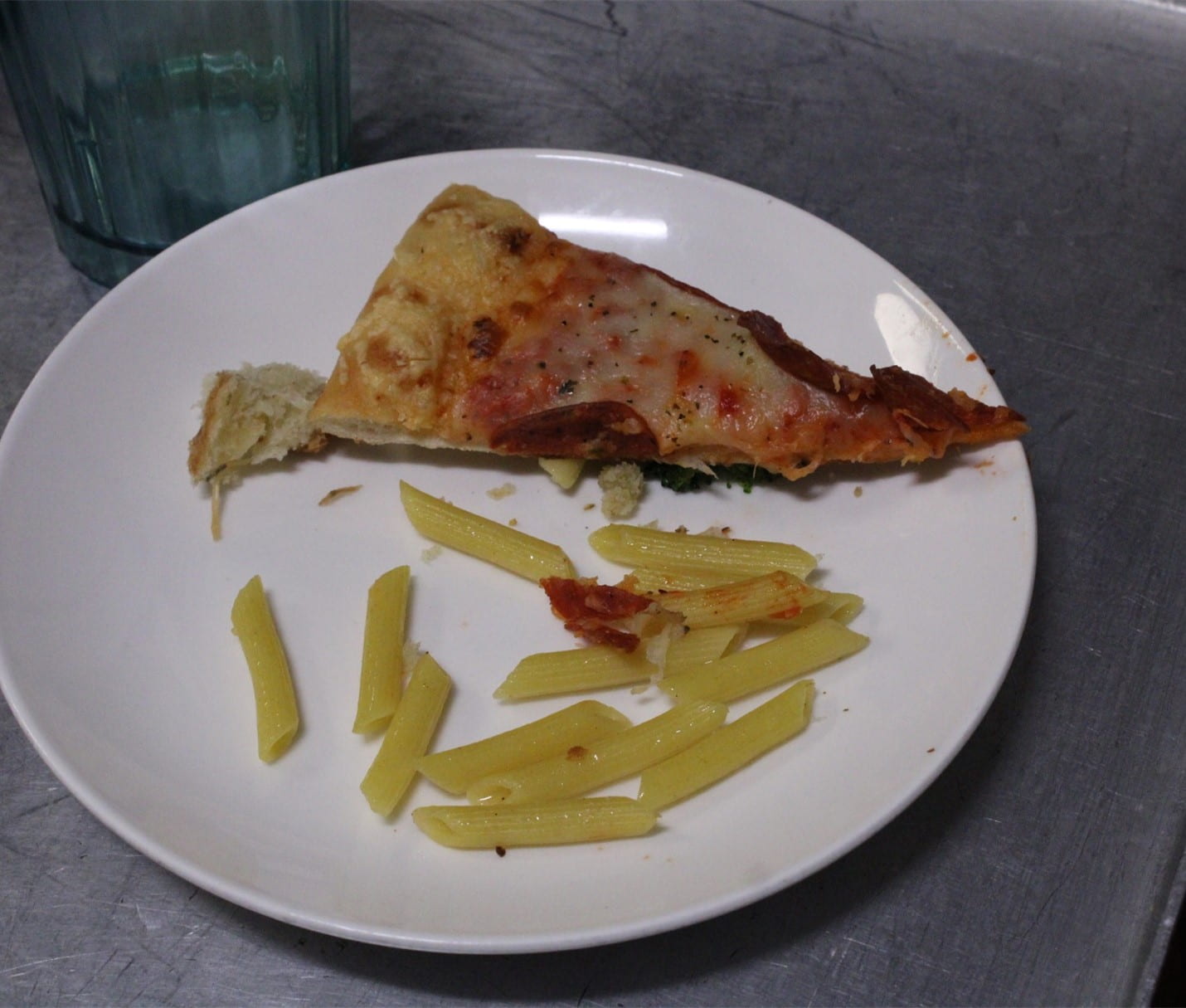Guest written by Kaeley Geschke.
Providing access to food for a large community such as Indiana University is a sizable feat with a plethora of challenges. You must make sure that menus across campus are diverse enough to meet everyone’s dietary needs and preferences. You must ensure everyone has access to food no matter their income level – as well as managing the waste they are creating.
This year is the beginning of the All-you-care-to-eat (AYCTE) meal plan. While this plan is becoming increasingly popular across Big 10 schools, this serving model is designed to allow for students to come and go as they please without needing to worry about running out of points or money on their cards. Out of all the things to worry about in college, access to food should not be one. This meal plan, with its many benefits, does still have limitations. Right now, IU Dining is not set up to allow students to take food with them from the dining halls. This means that any food not consumed on the premises must be thrown out as food waste.
This aspect of food waste is not so easily controlled by Dining themselves. Instead it is up to the students to practice more food waste conscious practices – a task that is easier said than done as students have a lot on their plates (both literally and figuratively). To calculate how much waste is happening with this method of food service, I, along with Dining staff and volunteers from the Food Studies master’s program and Sustain IU, intercepted the waste between when students finished eating and the dishes being washed. We then scraped food and napkin waste into trash cans and weighed them. We did this for two dinner meals, both on Monday nights, one at Forest dining hall and the other at McNutt. We also conducted a survey of students to get a sense of their perceptions of waste.

Results
What we found was an average solid waste of 3.2 oz per person. This does not sound like much, but when you consider that the dining halls are open for 3 meals a day, 7 days a week, and serve thousands of people per meal, 3.2 ounces each adds up quickly. All of the food that comes back on these plates are unusable for any purpose. Even the items that are compostable have been mixed with products that are not, and even if they were, the sorting process that would be needed for it to be possible is going to be time consuming and expensive. This food must simply be thrown away.

The food being thrown away was, for the most part: food scraps, a bit of left-over rice and beans, pizza crust, a few fries, etc. It was seldom that full or nearly full portions of food came back. It is not reasonable to think about this in meals wasted. However, this is still weight that is just going into the landfill to sit and collect.
Discussion
When you compare IU to other schools in the Big 10, you will find that we are average in waste. This is not just an IU problem; this stretched across campuses.
The problem is not each individual student’s eating habits. It’s a cultural problem where we take more than we need because it is there, and we want to consume in the most time efficient and least energy expensive way possible. By changing the way we consume food in AYCTE dining halls or buffet style eating in general, we can reduce the general amount of waste coming back each day.
As consumers students could:
- Check NetNutrition® for your favorites across campus – you are less likely to throw away food you like and can take advantage of menu hacks to make a unique meal you will enjoy.
- Plan enough time to eat so you don’t have to rush and can make more trips to the concepts as needed. The eateries are open all day. You can stop by for as long as you need.
- Eat smaller meals more often. This gives you a better understanding of how hungry you are before you see all the delicious looking food and you overload your plate and gives you a chance to experience good food of all varieties.
- Take smaller amounts of food per trip.
- Take more trips as needed to feel content.
The food is prepared to be eaten. The solution is not to eat less food or to overeat just to clean your plate – we need to change the way we are thinking about eating and giving more time thought to the activity to allow for more conscious eating habits.

On the back-of-house side of operations, Dining has been taking steps to ensure that students have access to foods they are going to like and to encourage students to eat in a less wasteful manner.
Dining has done the following to try and limit the amount of consumer waste in their AYCTE facilities:
- Reusable dishes and removing trays.
- Small servings and dishes.
- Taking care with food rotation and use by:
- Creating chef specials that feature excess unprepared items from other meals.
- Making sure that the product received is correctly labeled and rotated dining staff can make fresh food and avoid unnecessary food spoilage.
- Avoiding over production – by paying attention to trends, Dining can take better care to not overproduce. Trends are adjusted by the day so they can watch how much food should be made.
- Revamping menus to feature favorites by:
- Trying to avoid making foods that are undesirable by the students.
- Keeping favorites and removing avoided items – the chef team evaluates their menus often, so this means they aren’t throwing out food nobody liked by just trying to make the same recipes.
Dining wants students to be comfortable in their facilities, and to be able to enjoy their food. While you are here IU is your home. Students spend more time here on a yearly basis than they do in their homes. Going into a Dining hall should be as comfortable and reliable as going into your own kitchen at home. Because of this the limits on consumer waste must come from consumers themselves.
There is so much possibility for change here. From the survey handed out at the Weigh the Waste events, we found that students have no perception of how much waste they were throwing out. We hope that by increasing awareness of the waste and by continuing to keep tabs on the waste habits of students we can see a decrease in the amount being wasted. It is up to the students themselves to care.
Kaeley Geschke is a recent graduate of the IU Food Studies master’s program. Their interests are in restaurant production and consumption. The Weigh the Waste project came out of a recent internship completed at IU Dining.
Leave a Reply